Flexible spacer system for the hot desert climate
Heinsberg, May 2020. CRICURSA Cristales Curvados, SA and Super Spacer® have long been a winning team for the production of XXL-sized curved insulating glass panels for original constructions with unique glass facades. For energy reasons, the warm edge spacer system was also used for the 5.500 m glass facade2 of the Qatar National Library built in Doha in 2018.
The wavy shape gives it stability
Rob Nijsse, professor of structural analysis and former partner of the ABT Arnhem engineering firm in the Netherlands, and ABT load-bearing consultant Ronald Wenting both participated as structural design managers for the first, congenial work of Rem Koolhaas and CRICURSA: the concert hall Casa da Música in Porto, whose undulating glass facades over the past 15 years have become the trademark of renowned architect Rem Koolhaas and his architecture office OMA Architekten in Rotterdam.
In the article "Designing and constructing corrugated glass facades", written by Rob Njisse and Roland Wenting, we read: "If it is possible to make the desired wavy shape with a sheet of paper, then even the glass industry is able to build it ". Indeed, the static advantage of a corrugated facade is evident. A harmonic folded sheet of paper essentially offers greater rigidity than a flat sheet, this also applies to glass facades. However, the sentence was not pronounced lightly, as it might seem at first. In fact, the two structural designers know from experience that there are only a handful of glass bending companies worldwide capable of producing curved XXL glass sheets of the required quality, with the necessary reduced radii and minimum tolerances.
Also, wanting to build the glass facade as a load transmission and shoring element, the design team set foot in uncharted lands. For Porto, Rem Koolhaas' vision included glass facades without steel and, where possible, without uncomfortable pillars, beams, steel cables or frames. A significant challenge, which was eventually overcome thanks to CRICURSA, one of the most famous curved glass manufacturers in the world. The XXL-sized curved glasses next to each other, arranged in an undulating manner, which stabilize each other and, therefore, support the loads together, have made it possible to do without vertical frames.
For Doha, the wavy shape is made with limited radii
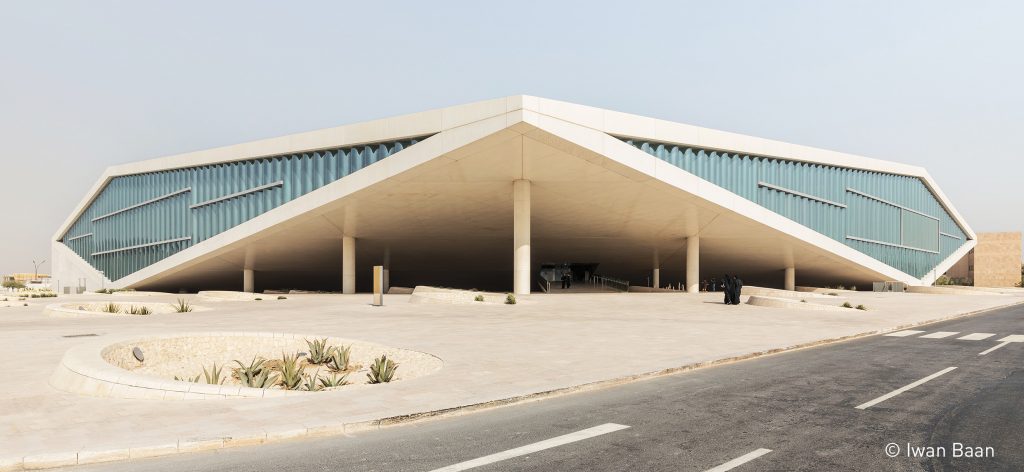
Also for the new construction of the Qatar National Library for the new Education City in Doha, Rem Koolhaas chose a wavy glass facade. This time the glasses are arranged in omega, inspired by the image of dried sheets of paper. The glass facades have the shape of a diamond, as if the corners of a box are folded upwards. By filtering the bright rays of the sun, they illuminate the library with a natural light as soft and without glare as possible. The white aluminum cover reflects the light down towards the room.
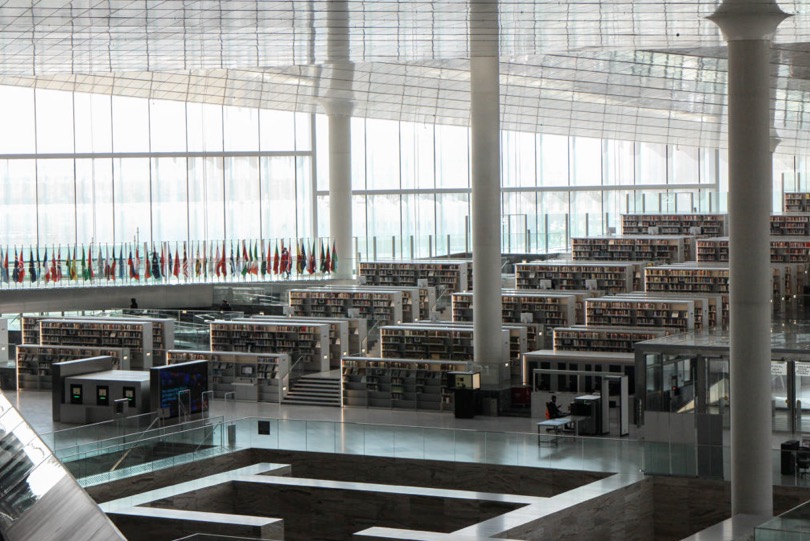
Access to the 138-meter-long library is not from the side, but from under the supported corner of the building in the center of a single triangular room, surrounded by three terraces with marble shelves filled with books. The Qatar National Library hosts over a million books and about 42.000 digital editions on an area of 500.000 square meters. On a suspension bridge, which overhangs almost the entire room, an intermediate floor is set up with reading tables, multimedia rooms, study rooms and a large auditorium. To arrange the Heritage Collection, comprising texts and manuscripts of particular value on the Arab-Islamic civilization and arranged in the form of a permanent exhibition, OMA Architekten Rotterdam found a rather spectacular solution: a room 6 meters deep, similar to a underground labyrinth, covered with beige travertine and hidden by a glass cover. The message is clear: books are treasures to be valued.
Energy-optimized facade
In the Qatar National Library, the lack of metal elements in the glass facade presents a decisive climatic advantage: there are fewer potential thermal bridges that would allow the penetration of heat into the building, compromising the insulating function of the gas layer and the hot edge in the double-layered curved glass. “Qatar is one of the regions most affected by the increase in average temperatures due to climate change,” explains CRICURSA marketing director Joan Tarrus. “In the summer, it gets over 40 degrees outside, but inside the library there must be a pleasant temperature of 20 degrees. The energy and, consequently, the production technique challenges posed by the glass of the facade were therefore considerable, especially considering that we did not want to insert any mechanical shading. "
Thanks to the positioning of the curved glass, the facade is self-supporting and extraordinarily resistant to wind loads. “The same principle was applied by Antoni Gaudí for the use of the famous catenary arches”, says Joan Tarrus. The wavy shape, compared to a flat glass surface with a sheet of equal thickness, allows the transmission of much greater loads both vertically relative to the plane - according to Rob Nijsse and Roland Weining here the bearing capacity increases by 1.000% - and at the level of the plate. To give the building even more stability, the metal bases between the glass elements were connected with internal columns in Doha.
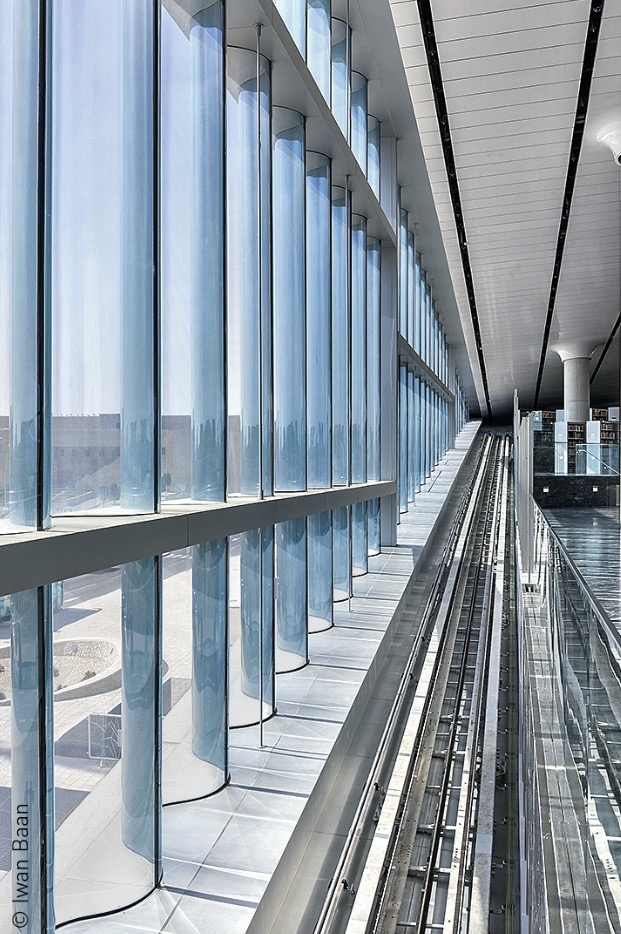
Joan Tarrus adds: “When we at OMA Architekten analyzed the challenge of a corrugated double-glazed façade, bending by force of gravity seemed to us the only way forward. Although the extreme climatic conditions in Doha posed a real technical challenge, curved float glass was the only way to achieve a uniform solution in terms of geometry, coating, screening and dimensions. The glass bending radius of 550 mm allowed us more freedom when designing. "
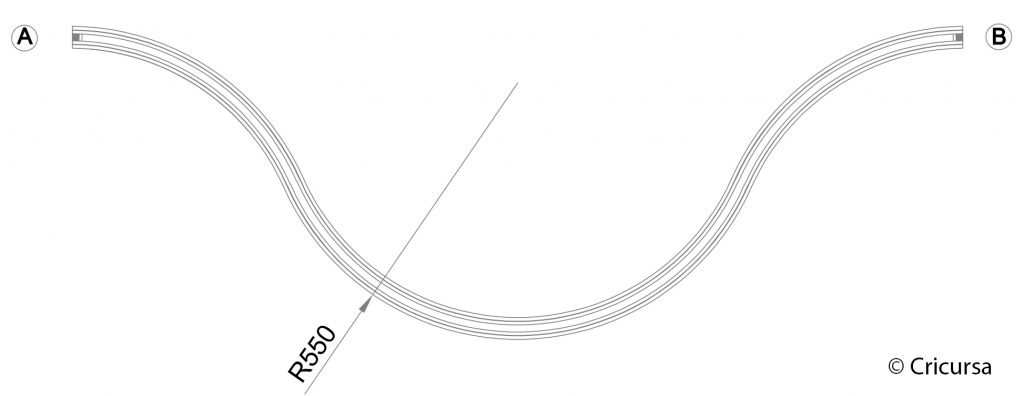
Curved laminated glass up to 5,50 meters high is made as a double layer insulating glass unit. The low-emissivity coating and solar shading layer filter and reflect radiated sunlight. To further limit the transmission of radiation, a grid of 3 mm staples spaced exactly 6 mm apart has been imprinted inside them: a technological masterpiece, given the very limited radii and the considerable dimensions.
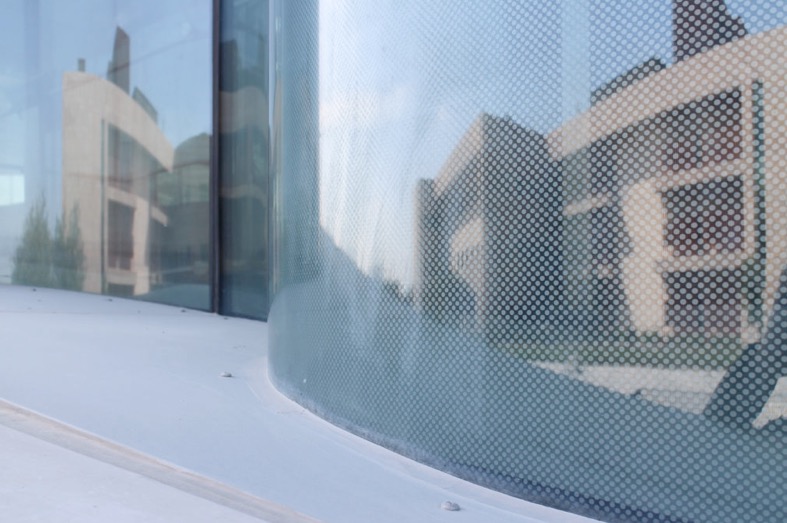
Warm edge indispensable in the desert climate
As warm edge spacers, CRICURSA has chosen the Super Spacer product® TriSeal ™ Flex. According to CRICURSA's experience, Edgetech / Quanex's special product specially developed for curved glass is ideal for the extreme climatic loads of the desert.
"The use of a warm edge for insulating glass is essential in this climatic region, if you want to optimize a building from an energy point of view", explains Joachim Stoss, managing director of Edgetech Europe GmbH and Vice President International Sales at Quanex. The constant passage from warm sunlight, to shadows, to cold night temperatures causes a permanent movement of the glass and, therefore, a considerable mechanical stress on the perimeter compound. “Flexible spacers like Super Spacer hermetically seal the space between the plates for many years. Thanks to the properties of the silicone foam, the spacer system follows the pumping movements of the slabs, preventing wear on the primary seal ”, adds Joachim Stoss.
Edgetech Europe GmbH
Super Spacer flexible silicone foam spacer systems® by Edgetech act as an energy-efficient warm edge in insulating glass windows. They significantly reduce heat loss to the outside, practically prevent condensation from forming and help extend the life of the window. Worldwide, more than 300 million meters per year are sold on average in over 90 countries.
Edgetech Europe GmbH based in Heinsberg is wholly owned by Quanex Building Products Corporation. Quanex is a leading manufacturer of components sold to Original Equipment Manufacturers (OEMs) in the construction products industry. Quanex, based in Houston, Texas, develops and manufactures energy efficient window elements as well as kitchen and bathroom components. Based on turnover, Edgetech / Quanex is the world's leading manufacturer of spacers. Edgetech Europe GmbH serves the markets of continental Europe and is one of Edgetech's three production sites with 450 employees and 16 extruders. For more information on Super Spacer Spacer Systems® and on Edgetech's hot edge profile technology, see: www.superspacer.com.



